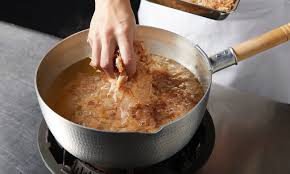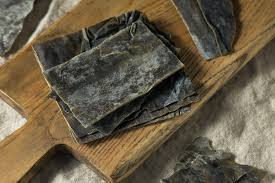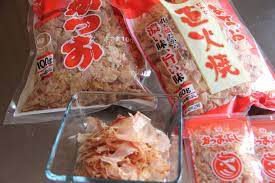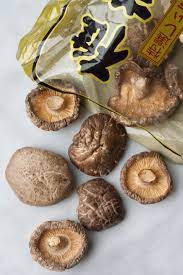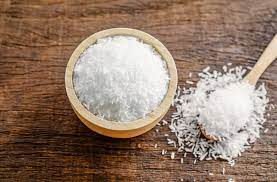The Backbone of the Kitchen…Broth
Soup is good. Soup is life. Sometimes we’ll turn to each other and just ask “soup?” But sometimes you come home from a long day in the dead of winter, anticipating a bowl of noodles and comfort, and there is no more chicken stock in the freezer.
What happens next? Maybe there is no soup? Or maybe you resort to the thin watery stuff the supermarket sells packaged in strange cartons or a powdered amalgamation of salt, starch and MSG they call stock powder? No. If you have 10 minutes you can have Dashi.
The backbone of all Japanese and Korean soups is a simple broth made with shelf stable ingredients called Dashi, and no pantry should be without the ingredients to make one. The method is simple: Put a pot of water on the stove at medium heat, put the ingredients in, simmer for 10-30 minutes, strain and season. The ingredients is where you get a bit of choice, but where they are united is that they are packed full of glutamates = flavour. Mix and match the following for quick soups from the pantry.
Kombu
Kombu is the Japanese name for Kelp, just that big old seaweed growing off of the coast. It is packed full of glutamates that will pack our broth full of flavour, salts, vitamins and minerals too.
Buying it is the trick. Like most of these ingredients, the Asian Supermarket is your place. You will find it at specialty Japanese markets…but the price will be high and it will likely come from China anyway. So go to the Asian Market, avoid the japanese section, and head to the dried foods section. There will be many packs of seaweed, look for wide dark green sheets covered in a mist of white salt crystals. I checked both sections last time I was in there: $2 for 200g in the dried section $6.85 for 180g in the Japanese section, looked like older stock too. Don’t get fooled by the myth of superior Japanese quality.
You don’t need heaps in your dashi, a couple of 5cm squares per 2L is about right. You can slice it up and put it in a seaweed salad or your soup afterward.
Katsuobushi
This one might be for the more dedicated of Dashi makers, but it is so worth it. Katsuobushi is dried, fermented and smoked Skipjack Tuna that is sold in flakes. It is full of glutamates, and proteins that add flavour, as well as lending a lovely smokey flavour to your broth.
Again, buying it is the only tricky bit. It is easy to find small packages intended as a garnish, but using them for stock would be incredibly expensive.The best bet here is to head to that Japanese section or specialty store and buy a big half kilo bag and then put it in an air tight container. They run around $40-50, but that is a lot of tasty soup there!
You only need a small handful per litre to make a luscious broth.
Shitake Mushrooms
Here’s one most people will know, but maybe not used like this. Add a handful and bring a deep earthiness that only comes from mushrooms. Best bought in a reasonably big bag dried at the Asian Market. Sliced ones tend to be lower quality at a higher price unless you are paying for premium. Whatever you do, stay away from the ones at places like Coles and Woolworths, they are just awful shriveled stale tasting cardboard. Look for nice Plump caps and shorts stems, they shouldn’t be desiccated and the stems are tough and woody. Slice them up at the end and add them back in to the soup.
For the vegans and vegetarians out there, combine these two and you will be in a far better position than 90% of those overcooked vegetable tasting vegetable stock recipes lead you to.
Dried Anchovy
Heading away from Japan and to Korea, these semi-dried Anchovies are a powerhouse of flavour. Similar to katsuobushi, but without the smoke.
Maybe a little trickier to find… head to the freezer section of a Korean specialty store. You want to look for medium size, say 5cm long, anchovies in a nice big bag. They are relatively cheap and keep for months in the freezer. Pair them with kombu for classic Korean style soup broth.
Hard Cheese Rind
From Korea we head out of Asia and into Nonna’s pantry to steal the leftover rinds of her Grano Padano, Pecorino and Reggiano. These rinds are not really good for grating, but hold onto them, put them in a tupperwear container for a rainy stockless day because they are still full of flavour. Cut them up and chuck them in a quick stock. Same goes for scrap bones from chicken wings, roast beef etc, freeze them for lean times
A final note on Glutamates & MSG:
Glutamates are where flavour is - in MSG to be specific,and while that word may send shivers down the spines of those of us who grew up amidst the racially driven 20th century propaganda of Chinese food induced migraines etc, it is side effect free and completely harmless for 99.99% of the population.
Those symptoms are overwhelmingly a potent mix of placebo and over eating. The closest science has come to replicating the claims is with massive 3 gram doses of MSG you would never find in food on an empty stomach causing stomach upset and nausea.
It occurs naturally in pretty much everything humans love to eat from tomatoes and cheese, to oyster sauce, mushrooms and lobsters. Glutamates are the flavour and fat carries it on your palate, while salt enhances and fortifies the flavour.
The main reason we don’t use MSG in Salt Gang products is because of the perceptual hangover, secondly as a point of difference and limitation that forces us to get creative (Hello vegemite powder!).
In our own cooking we make maximum use of naturally occurring MSG, but where we need to boost a little flavour in anything, in a broth, scrambled eggs, a beef and snap pea stir fry, we’re never afraid to reach for our little jar of ‘Ajinomoto’-the essence of flavour- and neither should you. For vegans and vegetarians it is a game changer, instant access to a depth of flavour that is challenging to replicate without animal based products. Leave the racist fear of the new and the different in the past where it belongs and make friends with tasty crystals.
If you still retain some doubts, head over to this great article in the Smithsonian Magazine that breaks down the history and the science of what we should really just call Powdered Umami.

